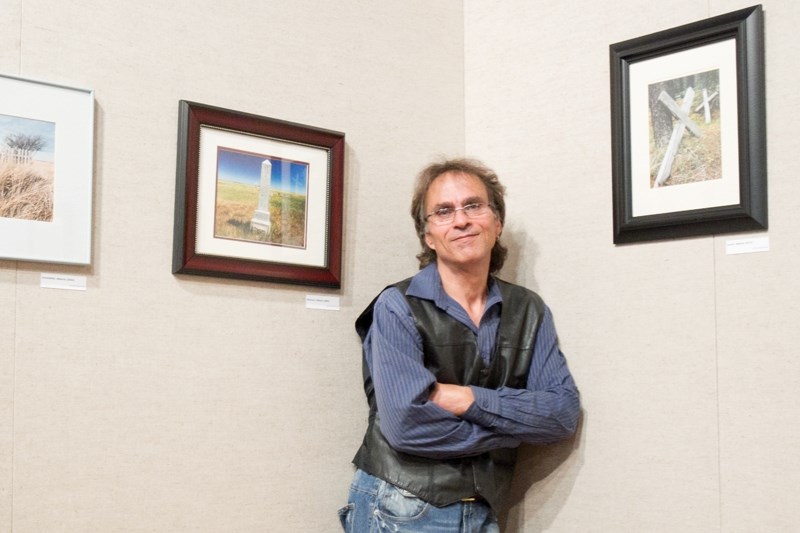A unique exhibit of photographs of ghost town cemeteries throughout Western Canada is now on at the Mountain View Museum.
The exhibit of 13 photographs of separate cemeteries details the remnants of cemeteries of the earliest settlements throughout the West that no longer exist. The exhibit is a culmination of 20 years of work by Johnnie Bachusky, editor of the Innisfail Province, to document the final resting places of the early settlers – from communities that have also vanished into the history books.
The cemeteries are one part of a larger interest Bachusky has for documenting ghost towns throughout Western Canada. The cemeteries date from about the 1880s.
The exhibit is entitled Final rest – a photographic journey through pioneer cemeteries.
“When I go through ghost towns I make it a point of (photographing) what may be remaining, like if there is an old grain elevator I'll photograph that, or an old train station or an old general store or an old water tower, and usually you will always find a cemetery as well, either inside the townsite or several kilometres away,” Bachusky said.
In a lot of cases, Bachusky said the regional government doesn't know these cemeteries exist because the records – which were in many cases kept by the local churches – are also gone.
“Lots of times the records have gotten lost over the years. When these towns closed up the churches were usually moved to some other community or just torn down and in many cases the records got lost or destroyed, so what's left are cemeteries,” he said.
As a result of weather and time, many markers – if there were markers to begin with – have also been lost, so nobody knows who is buried there.
“In most cases, all that's left is a simple cross,” he said, noting that many people in pioneer times were too poor to have a proper marker with an etched name.
He said because of the subject matter, he's respectful of the sites.
“What I'm just trying to do is just show the beauty of these sort of places as they fade away,” he said.
Bachusky took hundreds of photographs but whittled the exhibit down to 13 to represent all the western provinces.
“I wanted to represent every western Canadian province and also the different types of geography (from mountains to prairies),” he said.
He said his interest in ghost towns and cemeteries is a way to uncover often forgotten parts of history that have now faded away. Photographing, documenting and in some cases talking to a few people who remain in these locales is a way to breathe life back into these places.
“It's a great way to know history. Maybe that particular community, maybe that particular family (if a name can be uncovered). It's just another piece of the puzzle. (The cemetery) is usually the last remaining institution of a former town, ” he said.
Bachusky described photographing the cemeteries as “haunting, exhilarating (and) sad.”
Bachusky went to Lovett, Alta. three times this past summer and said it's one of the last coal mining towns in the province that have abandoned buildings and other structures.
“There's 11 markers still left. There are 37 burial sites that have been confirmed by archeologists and I would say seven to nine of them are children all dying in 1918 (during the influenza epidemic),” he said, adding that another site he visited in Saunders contains a cemetery exclusively for children.
“Cemeteries are the final resting place not only for the people, but the communities themselves,” he said.
The exhibit, which opened Oct. 1, will run until Nov. 1.
"Cemeteries are ... the final resting place not only for the people, but the communities themselves."Johnnie Bachusky, exhibitor, MV Museum



